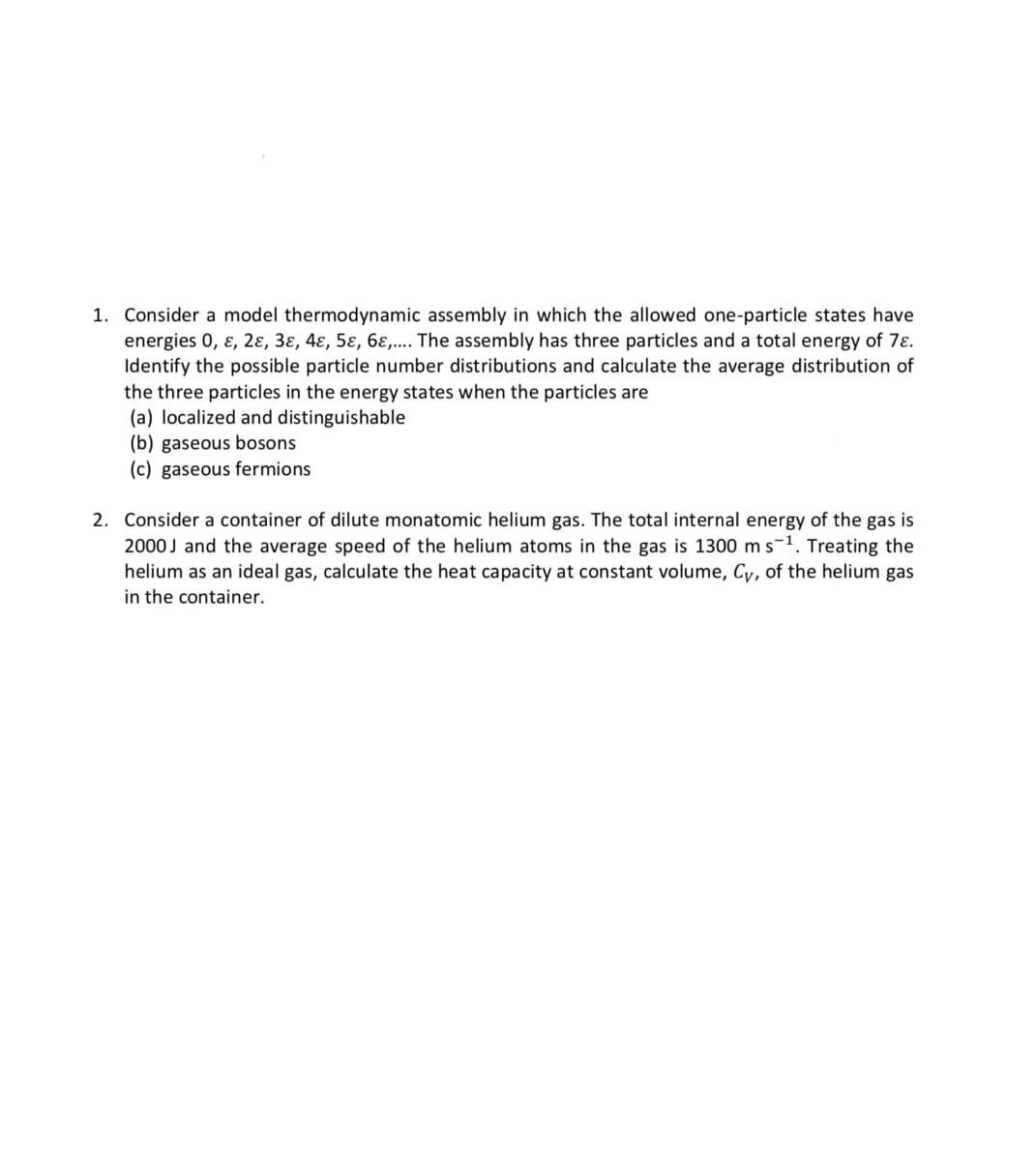1. Consider a model thermodynamic assembly in which the allowed one-particle states have energies 0, ɛ, 2ɛ, 3ɛ, 4ɛ, 5ɛ, 6ɛ,.. The assembly has three particles and a total energy of 7ɛ. Identify the possible particle number distributions and calculate the average distribution of the three particles in the energy states when the particles are (a) localized and distinguishable
1. Consider a model thermodynamic assembly in which the allowed one-particle states have energies 0, ɛ, 2ɛ, 3ɛ, 4ɛ, 5ɛ, 6ɛ,.. The assembly has three particles and a total energy of 7ɛ. Identify the possible particle number distributions and calculate the average distribution of the three particles in the energy states when the particles are (a) localized and distinguishable
Physical Chemistry
2nd Edition
ISBN:9781133958437
Author:Ball, David W. (david Warren), BAER, Tomas
Publisher:Ball, David W. (david Warren), BAER, Tomas
Chapter12: Atoms And Molecules
Section: Chapter Questions
Problem 12.52E
Related questions
Question
Answer Question 1 only

Transcribed Image Text:1. Consider a model thermodynamic assembly in which the allowed one-particle states have
energies 0, ɛ, 2ɛ, 3ɛ, 4ɛ, 5ɛ, 6ɛ,.. The assembly has three particles and a total energy of 7ɛ.
Identify the possible particle number distributions and calculate the average distribution of
the three particles in the energy states when the particles are
(a) localized and distinguishable
(b) gaseous bosons
(c) gaseous fermions
2. Consider a container of dilute monatomic helium gas. The total internal energy of the gas is
2000J and the average speed of the helium atoms in the gas is 1300 ms-1. Treating the
helium as an ideal gas, calculate the heat capacity at constant volume, Cy, of the helium gas
in the container.
Expert Solution
This question has been solved!
Explore an expertly crafted, step-by-step solution for a thorough understanding of key concepts.
Step by step
Solved in 2 steps with 1 images

Knowledge Booster
Learn more about
Need a deep-dive on the concept behind this application? Look no further. Learn more about this topic, chemistry and related others by exploring similar questions and additional content below.Recommended textbooks for you

Physical Chemistry
Chemistry
ISBN:
9781133958437
Author:
Ball, David W. (david Warren), BAER, Tomas
Publisher:
Wadsworth Cengage Learning,

Physical Chemistry
Chemistry
ISBN:
9781133958437
Author:
Ball, David W. (david Warren), BAER, Tomas
Publisher:
Wadsworth Cengage Learning,